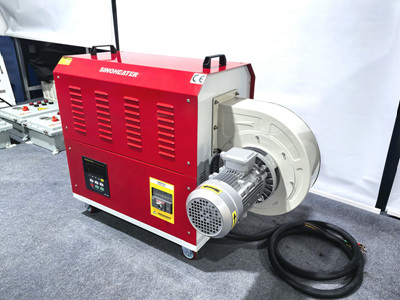Selecting a Heat Blower: Critical Considerations for Fire-Resistant Housing Performance
When evaluating heat blowers, the fire-resistant properties of the outer casing are paramount to ensuring safety, especially in environments with flammable materials or high-temperature operations. A robust housing design minimizes the risk of ignition, contains internal heat, and protects against external fire hazards. Below are key factors to assess when determining the fire safety of a heat blower’s exterior.
Material Composition and Flame-Retardant Ratings
The primary material used in the heat blower’s housing directly impacts its fire resistance. Opt for non-combustible or self-extinguishing materials, such as reinforced plastics with flame-retardant additives, metal alloys, or thermoset composites. These substances resist melting, dripping, or sustained combustion when exposed to flames or high temperatures. Check for certifications like UL94 V-0 or V-2, which indicate the material’s ability to self-extinguish within a specified time after ignition. Avoid housing made from untreated polymers or low-grade metals, as these may deform or catch fire under extreme heat.
Thermal Insulation and Heat Dissipation Design
Effective insulation prevents external surfaces from overheating, reducing the risk of accidental ignition of nearby objects. Look for heat blowers with double-walled casings or aerogel-based insulation layers that trap and dissipate heat internally. Vented designs with strategically placed grilles or fins also enhance airflow around the motor and heating elements, preventing heat buildup. Ensure that insulation materials are non-flammable and rated for continuous exposure to the device’s maximum operating temperature. Poor insulation can lead to hotspots, which compromise both safety and energy efficiency.
Impact Resistance and Structural Integrity Under Fire Conditions
In fire-prone settings, the housing must withstand physical stress without cracking or collapsing, which could expose internal components and escalate hazards. Evaluate the casing’s durability through impact tests or manufacturer data on its ability to retain shape under thermal shock. Some models incorporate reinforced ribs or ribbed structures to enhance rigidity while maintaining lightweight properties. Additionally, verify that seals and gaskets are fire-resistant to prevent smoke or toxic gas leakage during prolonged exposure to flames.
Certification Standards and Compliance with Safety Regulations
Reputable manufacturers subject their products to rigorous testing by independent laboratories to meet global fire safety standards. Look for certifications such as IEC 60335 (for household appliances), NFPA 70 (National Electrical Code compliance), or EN 60529 (IP ratings for dust/water resistance). These certifications confirm that the heat blower’s housing can endure specified fire scenarios without failing. Devices lacking such documentation may not adhere to minimum safety thresholds, increasing liability risks in commercial or industrial applications.
Chemical Resistance to Flammable Substances
In environments where the heat blower may contact solvents, oils, or chemicals, the housing must resist corrosion and combustion triggered by these substances. Choose casings treated with anti-static coatings or chemical-resistant finishes to prevent static discharge or reactions that could ignite vapors. Some materials, like stainless steel or epoxy-coated metals, offer inherent resistance to corrosive agents, extending the device’s lifespan and safety in harsh conditions.
Accessibility for Maintenance Without Compromising Fire Safety
Regular inspection and cleaning are essential, but the housing design should not create vulnerabilities during upkeep. Ensure that access panels or removable sections use fire-resistant fasteners or interlocking mechanisms that maintain structural integrity when closed. Quick-release latches or tool-free designs simplify maintenance while ensuring that components remain securely enclosed during operation. Avoid casings with loose-fitting parts or gaps that could allow embers or sparks to enter.
By prioritizing these features, buyers can select a heat blower with a housing that prioritizes fire safety without sacrificing functionality. Robust materials, thermal management, and compliance with international standards collectively reduce the risk of fire-related incidents, protecting both personnel and property.



